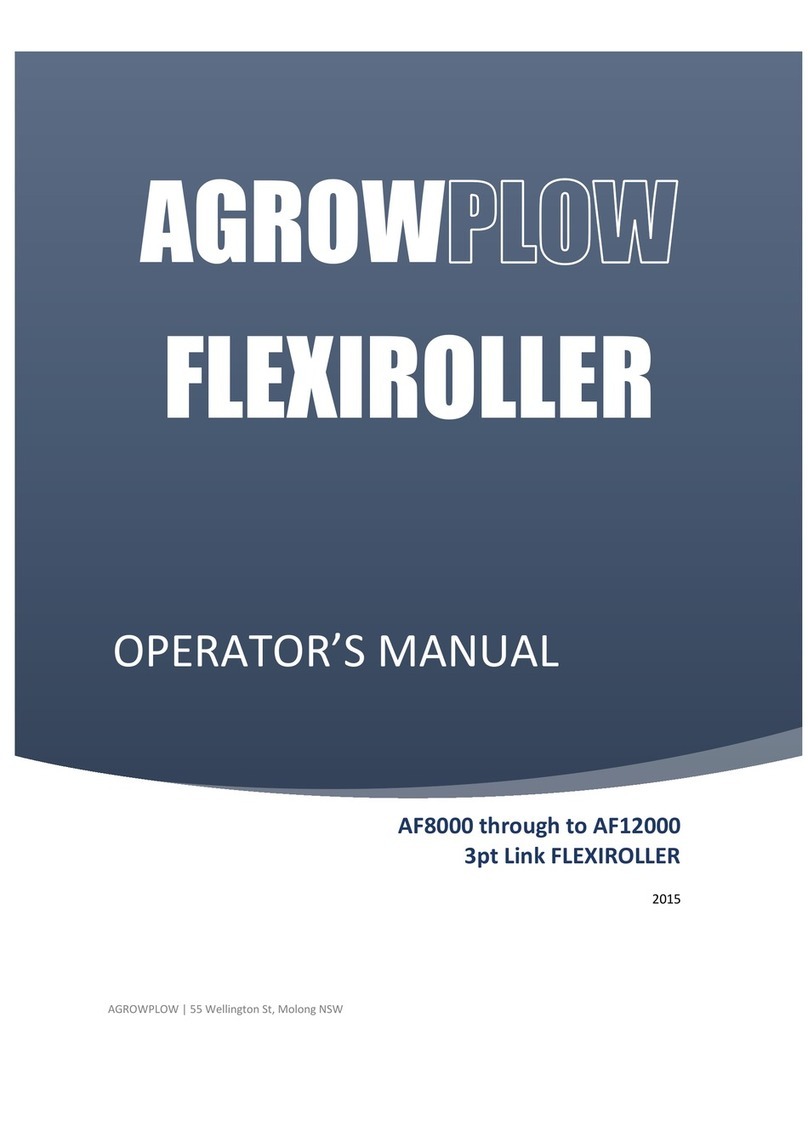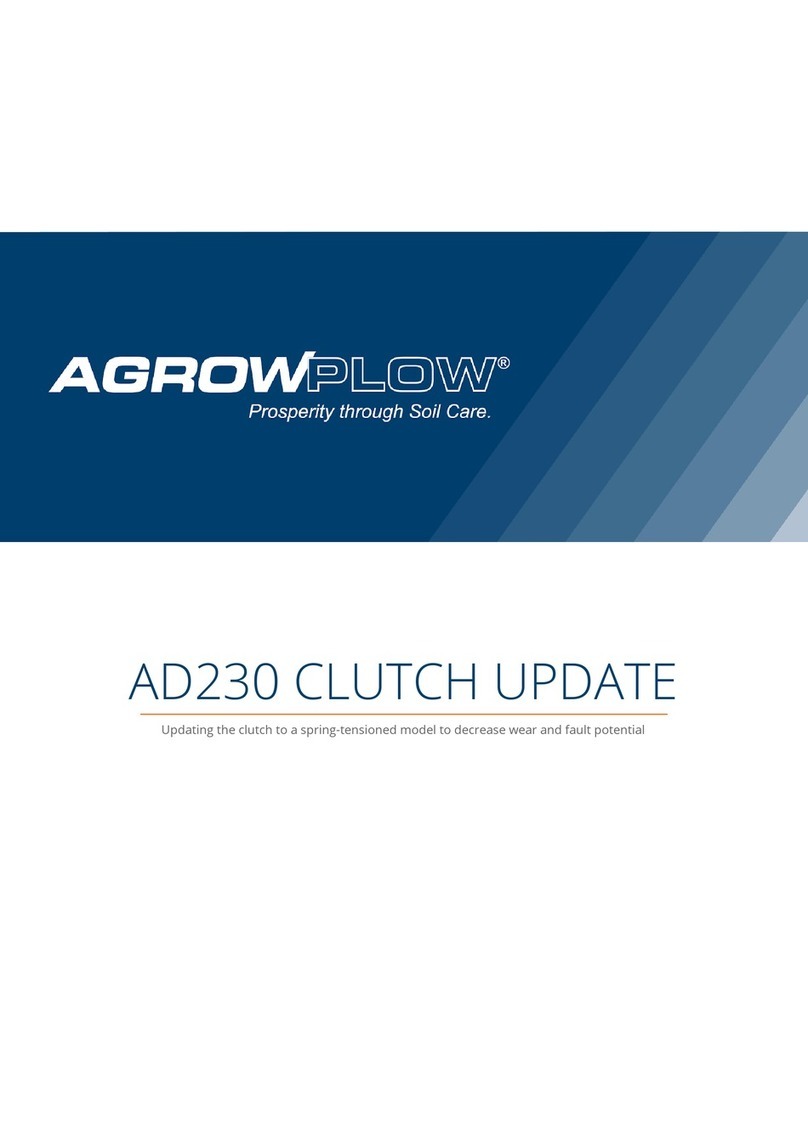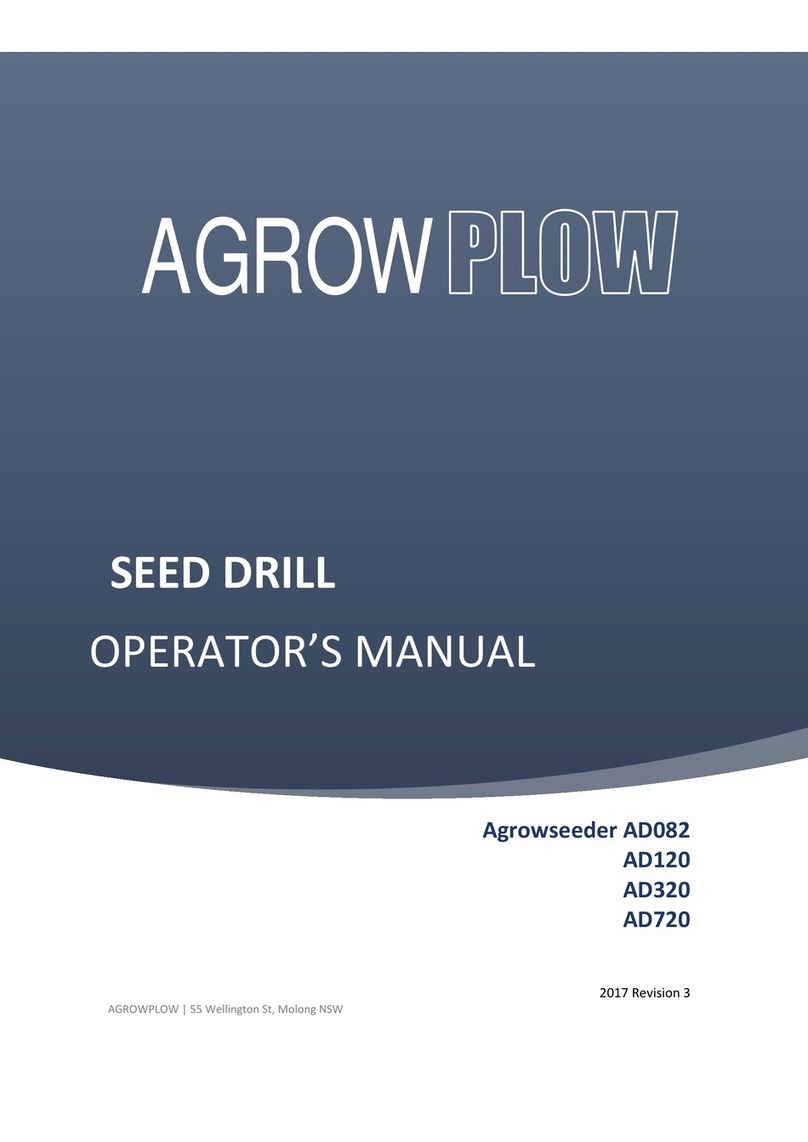A g r o w p l o w O p e r a t o r s M a n u a l P a g e | 5
Table of Contents
Contact Details ...................................................................................................................................................................1
Disclaimer...........................................................................................................................................................................3
The Owner’s Manual..........................................................................................................................................................4
Delivery Inspection.........................................................................................................................................................4
Table of Contents ...............................................................................................................................................................5
Table of Figures and Tables................................................................................................................................................7
Agrowplow –Company Profile...........................................................................................................................................8
1. Safety..........................................................................................................................................................................9
Shared Responsibility for Safety........................................................................................................................9
Safe Operation.................................................................................................................................................10
Warning Decals................................................................................................................................................11
Ergonomic Safety.............................................................................................................................................19
Maintenance....................................................................................................................................................20
Transporting the Machine...............................................................................................................................21
Un-Hitching the Machine.................................................................................................................................21
Risk assessment...............................................................................................................................................22
2. Operational Expectations and Limitations...............................................................................................................24
Completing Safe Use Instruction (SUI) & Pre Delivery Inspection (PDI) Reports ............................................24
3. Machine Setup .........................................................................................................................................................25
Hitching and Levelling......................................................................................................................................25
Working Depth ................................................................................................................................................26
Operating Speed..............................................................................................................................................27
Optional - Mulch Blades ..................................................................................................................................27
Optional - Furrowers .......................................................................................................................................27
Optional - Coulters...........................................................................................................................................27
4. Undercarriage Set Up...............................................................................................................................................29
Rigid Shear Pin Shanks.....................................................................................................................................29
Hydraulic Recoil Shanks...................................................................................................................................29
5. Plough Operation .....................................................................................................................................................32
Ploughing in ideal conditions...........................................................................................................................32
Ploughing in tough conditions.........................................................................................................................32
Specific Conditions...........................................................................................................................................33
Suggested Parameters.....................................................................................................................................34
6. Maintenance ............................................................................................................................................................35
Pre-Operation Check .......................................................................................................................................35






























